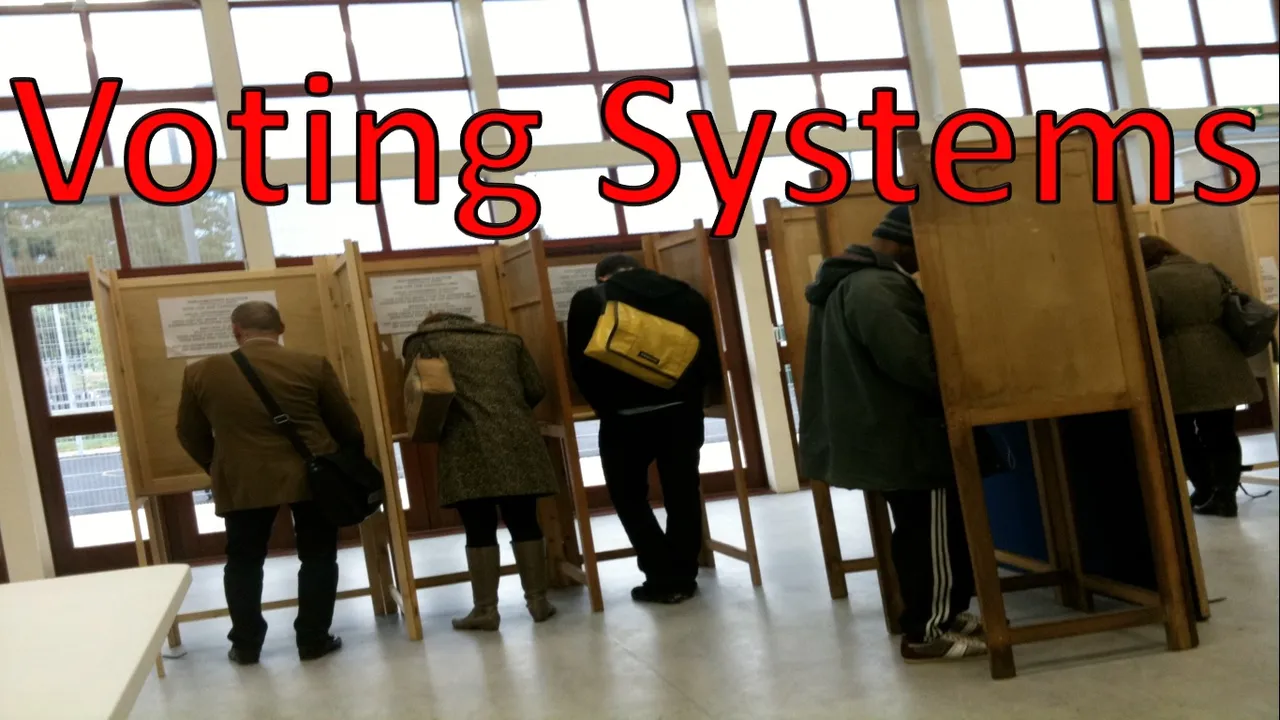
As we have just had the Queensland State Election (25 November 2017). I thought I would post about voting. I have found voting in elections in Australia extremely confusing. The federal elections in particular are very complicated. There are many systems for voting, Australia uses an instant-runoff form of preference voting system. I will explain a handful of voting systems that are used in different countries and I will make some comparisons between them.
First-past-the-post
Some countries/nations such as the United States of America, United Kingdom, and Canada use the first-past-the-post voting system. The first-past-the-post voting system is very simple. Whoever gets the highest number of votes wins. The voters just need to pick one candidate and they are done.
Is this a fair system? The first-past-the-post system works better when there are fewer candidates or a few dominant candidates. The first-past-the-post system struggles when there are many candidates with very similar vote totals. The person with the highest number of votes may only have a small percentage of the total votes. This candidate may not be a good representation of the majority of voters.
There might be several candidates that propose similar policies or are popular with the same demographic. These candidates will split votes between them, hence reducing the number of votes for each candidate. Candidates that appeal to just one group of people could end up winning even though the majority of the voters do not agree or support them.
Imagine that 25% of the population support a candidate (Candidate A) while the remaining 75% of the population are strongly opposed to Candidate A. Also imagine that there are another 6 candidates that are popular with the 75% of the population that strongly oppose Candidate A. If the 75% split their vote across the 6 candidates, the candidate with the highest number of votes out of the 6, might have less than 25% of the total vote. Therefore, Candidate A, who is strongly opposed by 75% of the population would win the election. See the table below for an example, Candidate A is supported by 25% and opposed by 75% and candidates B to G are supported by 75% and opposed by 25%
First-past-the-post voting with unpopular winner

Note: Green signifies winners and red signifies losers for tables presented in this post.
Any system that runs a risk of producing a winner that does not represent the majority of voters should not be recommended. The first-past-the-post voting system is very popular as most countries only have a very small number of candidates that capture most of the votes (two-party system). Most of the time, for countries that use the first-past-the-post voting system, the winning candidate gets more than 50% of the vote. The simple nature of the first-past-the-post voting system makes it very appealing.
Countries using first-past-the-post voting system
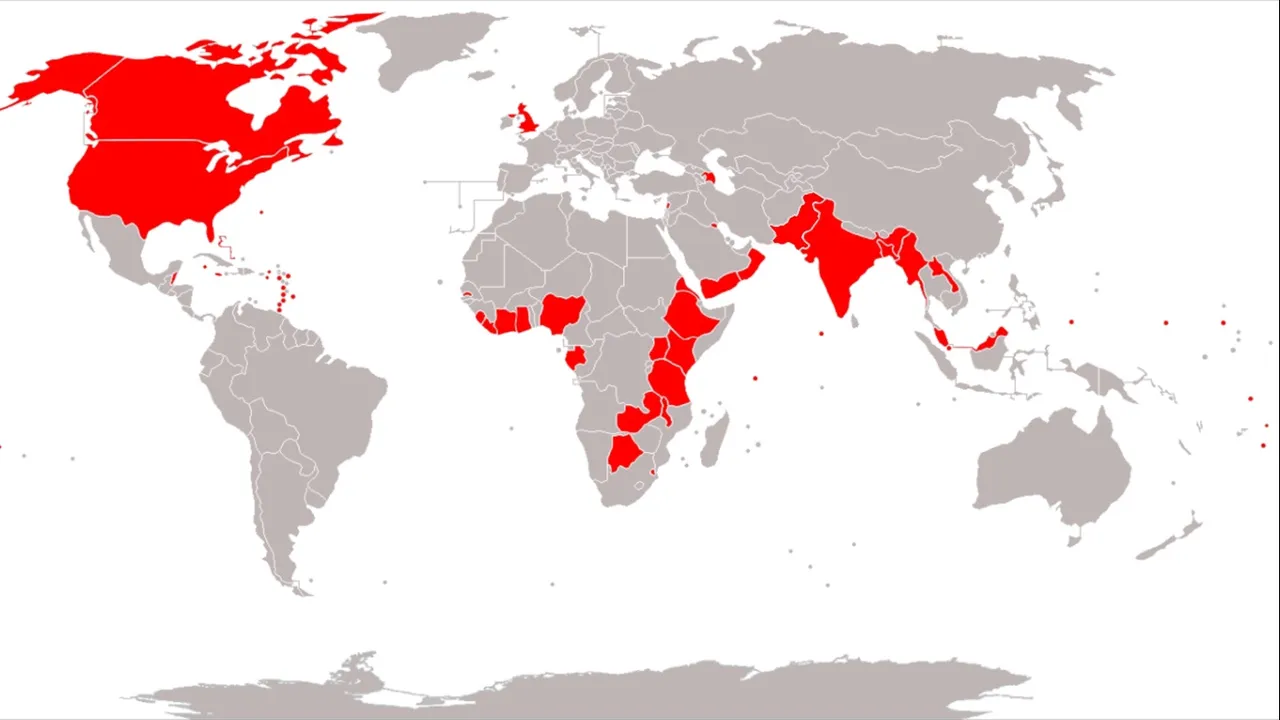
Preference Voting
There are many types of preference voting systems. The following are examples of the different types of preference voting systems:
- Instant-runoff system
- Condorcet voting systems
- Bucklin voting system
- Borda count system
- Majority judgement system
Instant-runoff system
Australia uses the instant-runoff system. The first preference votes of all candidates are tallied. If a candidate receives more than 50% of the vote, that candidate wins. This is the same outcome as the first-past-the-post voting system. If none of the candidates receive more than 50% of the votes. The candidate with the least number of votes is eliminated. The second preference votes of the eliminated candidate are redistributed to the remaining candidates. If a candidate receives more than 50% of the vote, that candidate wins. If still none of the candidates have reached 50% of the votes, the candidate with next lowest number of votes is eliminated and preferences are redistributed to the remaining candidates. This process goes on until a candidate receives more than 50% of the vote.
Below is an example of how the instant-runoff system works with four candidates. The candidates are Jane, Eric, Jack, and Rita. The tables below show the first, second, third and fourth preference votes for the election. If there are 4 candidates, there are 24 different ways people can allocate their preferences.
Results for vote combinations

No candidate received more than 50% of the vote. Jack received the lowest number of first preference votes. Therefore, Jack has been eliminated and his votes have been redistributed based on the preferences of his voters. The tables below show the votes after redistribution.
Election result after preferences have been allocated
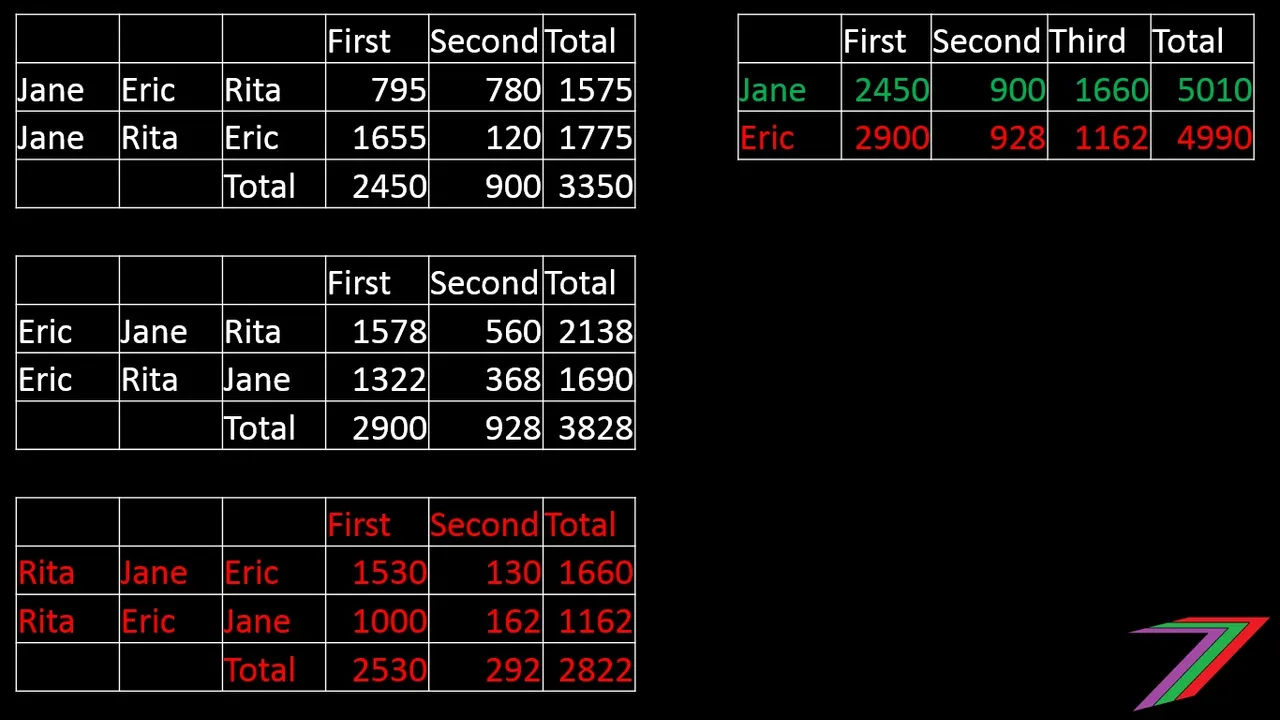
After Jack’s voter’s preferences have been redistributed, still no candidate has a majority of the votes. Rita now has the least votes (Jane previously had less votes than Rita but because of how Jack’s voter’s second preferences have been redistributed, Jane now has more votes than Rita). Rita’s voter’s second preferences are now redistributed to Jane and Eric. Jane now has over 50% of the vote and has won the election. See the tables above for the final result of the election. If this had been a first-past-the-post vote election Eric would have won. Is Jane a better representation of the voter’s choice than Eric?
Condorcet Voting Systems
There are several variations of the Condorcet voting system. These variations apply when the Condorcet criterion is not achieved. The Condorcet criterion requires that the winning candidate obtains the highest vote when compared one-on-one with any of the other candidates. This can be demonstrated using our example of Jane, Eric, Jack, and Rita. The tables below shows the complete breakdown of the voting.
Breakdown of votes of election
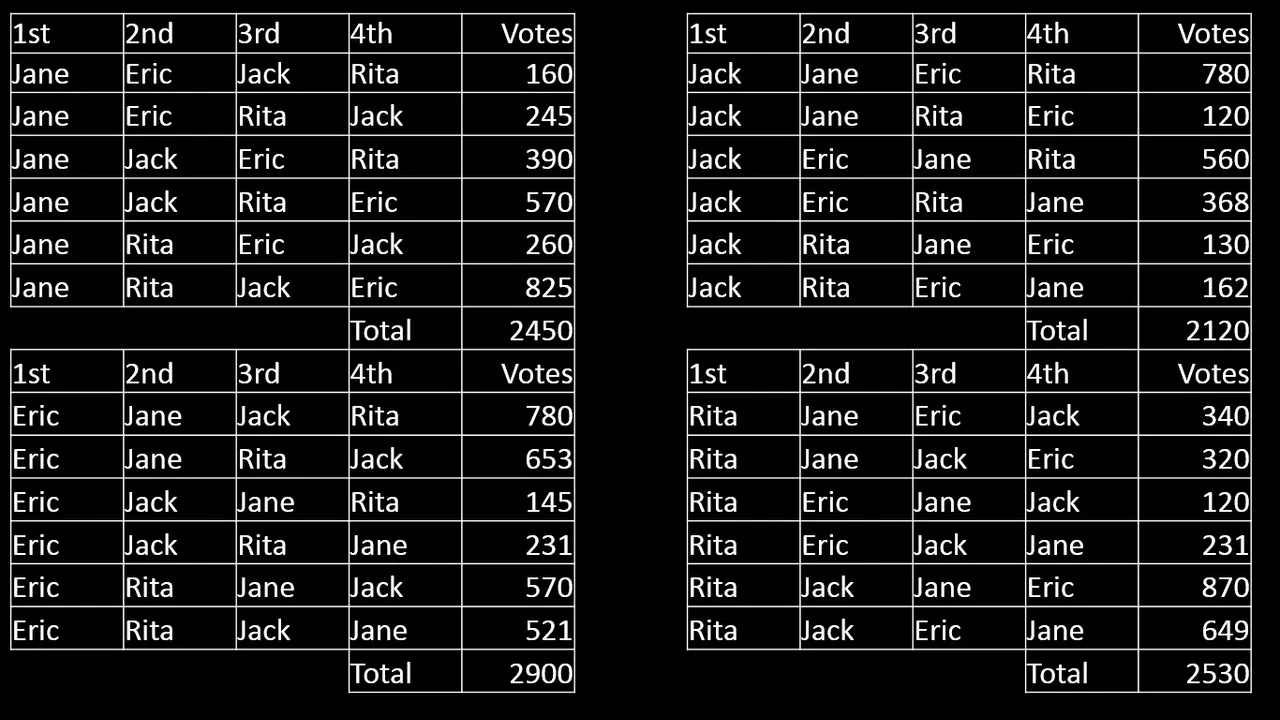
The tables above can be used to determine how each candidate performs one-on-one against each other. See the table below to see how they performed.
Candidates one-on-one
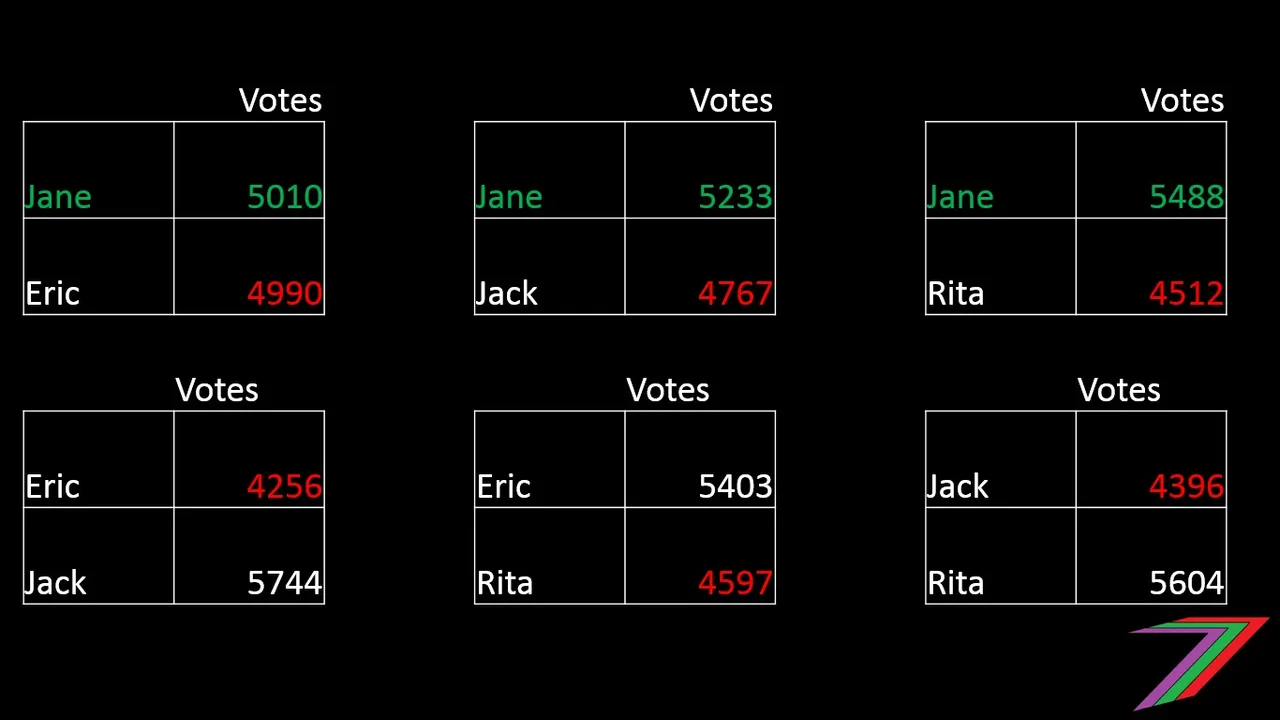
As can be seen from the tables, Jane is a Condorcet winner. She would win one-on-one elections against any of the candidates. Not every election produces a Condorcet winner. In the event that there is not a Condorcet winner, there are several methods of determining the winner of the election. These methods range from selecting the candidate with the most on-on-one wins to the candidate that lost the one-on-one elections by the least number of votes.
The Bucklin voting system
The Bucklin voting system is less complex than the instant-runoff system. Voters are required to rank candidates. If the after the first preference votes are counted a candidate has more than 50% of the votes, that candidate is declared the winner. If no candidate has 50% of the votes, the second preferences are added to the first preferences. If a candidate has more than 50% of the vote they are declared the winner. This process continues until a candidate reaches over 50%. See the table below of an example of the Bucklin voting system using our example of Jane, Eric, Jack, and Rita.
Bucklin System
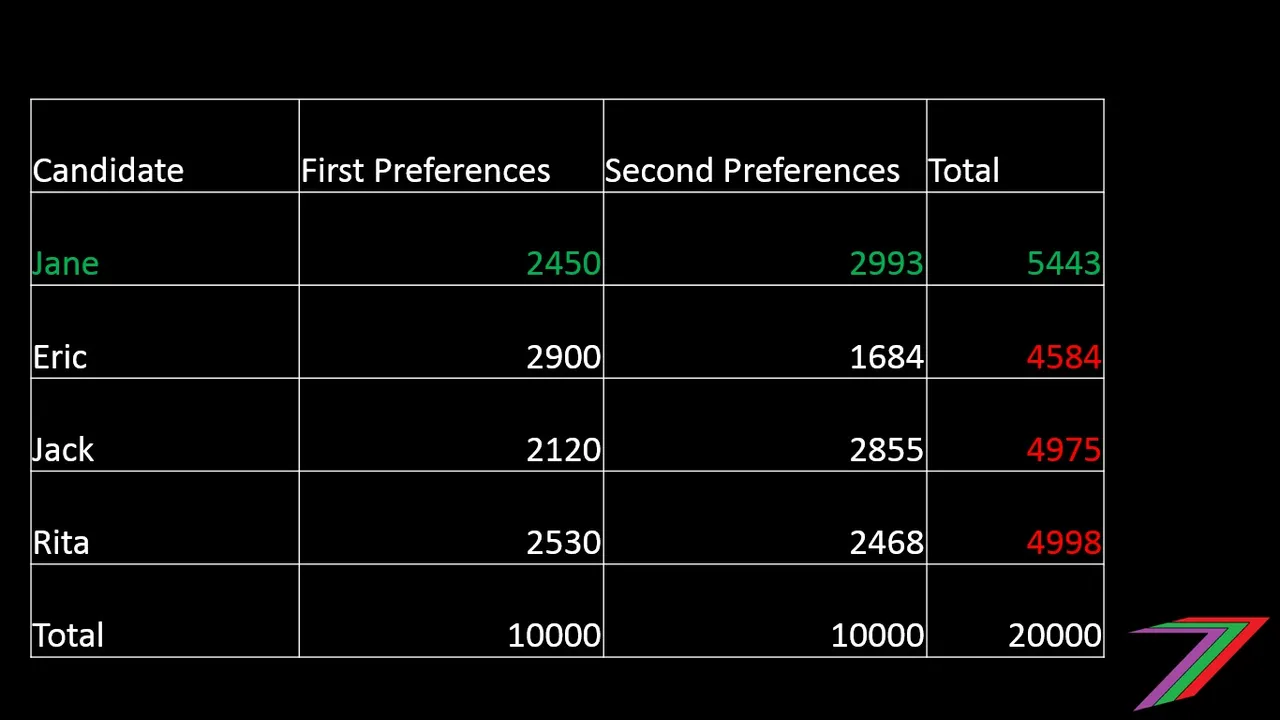
After second preferences have been counted, Jane has over 50% of the votes, therefore she has won the election. The Bucklin voting system can produce more than one candidate with more than 50% of the vote. The preferences can be weighted to avoid more than one candidate reaching 50%.
Borda count voting system
The Borda count voting system requires the voters to rank candidates according to first, second and third preferences. Preferences are awarded points. For example, the first preference is awarded 2 points, the second preference is awarded 1 point and the third preference is awarded 0 points. The candidate with the most points wins. Using our example let’s see which candidate wins using the Borda count voting system.
Borda count results

As you can see from the tables, Jane scores the most points and wins the election. The Borda count voting system is good as it incorporates second preferences without giving them the same weight as first preferences. This demonstrates that first preferences should be more valuable than a redistributed second or third preference.
Majority judgement voting system
The majority judgement voting system requires voters to give the candidates a rating. For example, the ratings could be brilliant, good, fair, or poor. The candidate with highest median rating is the winner of the election. We can again use our example of Jane, Eric, Jack, and Rita. This example, I am assuming first preferences get a ‘brilliant’ rating, second preferences get a ‘good’ rating, third preferences get a fair rating and fourth preferences get a ‘poor’ rating. In reality, preferences and ratings need not necessarily align but for the purpose of this example I have assumed they do. The table below shows the result of the election.
Majority judgement voting
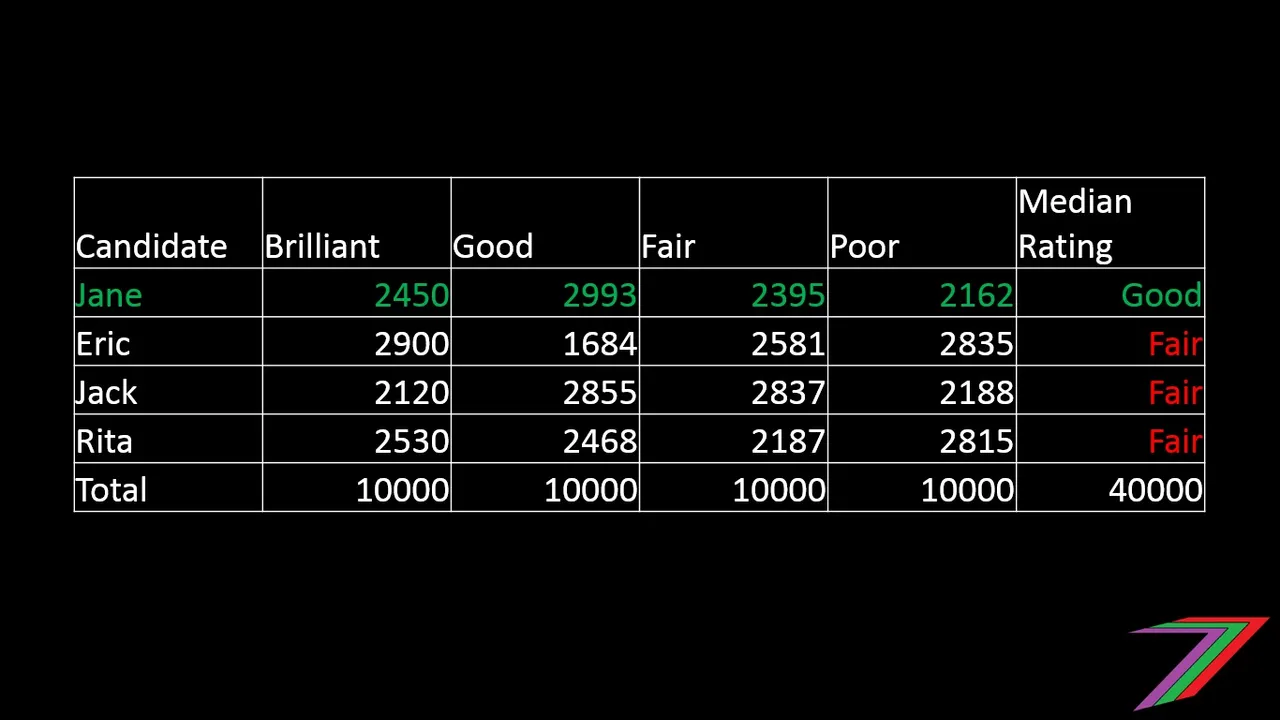
Jane wins the election again. Her median rating is in the good category while the other three candidate’s median rating are in the fair category. As with the Bucklin voting system, there is a risk that several candidates could have the same score.
Other voting systems
There are many other preferential voting systems that can be used to determine the winner of an election. This post has just covered a few of the possible systems. Based on the example we have used, it appears that the different preferential voting systems produce similar results. The logic behind each system varies but each system attempts to utilise the votes cast to determine a winner that best represents the voters.
How different systems can produce different results
The first example used in this post demonstrated that the first-past-the-post system can produce different results than preferential voting systems. Different preferential voting systems can also produce different results. The second example below demonstrates how results of an election can vary using the instant-runoff system and Condorcet voting system.
Comparison of results using different voting systems

The tables show that:
- Bernie wins the election using the first-past-the-post voting system
- Louis wins the election using the instant-runoff voting system
- Giselle wins the election using the Condorcet voting system
Who should win the election?
Manipulating the results
The first-past-the-post voting system favours candidates that have few or no other candidates that appeal to same demographic. The first-past-the-post system cannot be manipulated through strategies as the winner is determined by a simple vote for the preferred candidate.
If we look at first-past-the-post voting systems from a party perspective, the first-past-the-post voting system favours parties with high concentrations of voters within a particular area/electorate over parties that have their voters scattered over many electorates. In the 2017 United Kingdom election, the Scottish National Party had less than half the total votes of the Liberal Democrat Party but won almost three times as many seats in parliament. This was because the Scottish National Party voters were heavily concentrated in just a few electorates (Scotland).
Results of 2017 UK Election
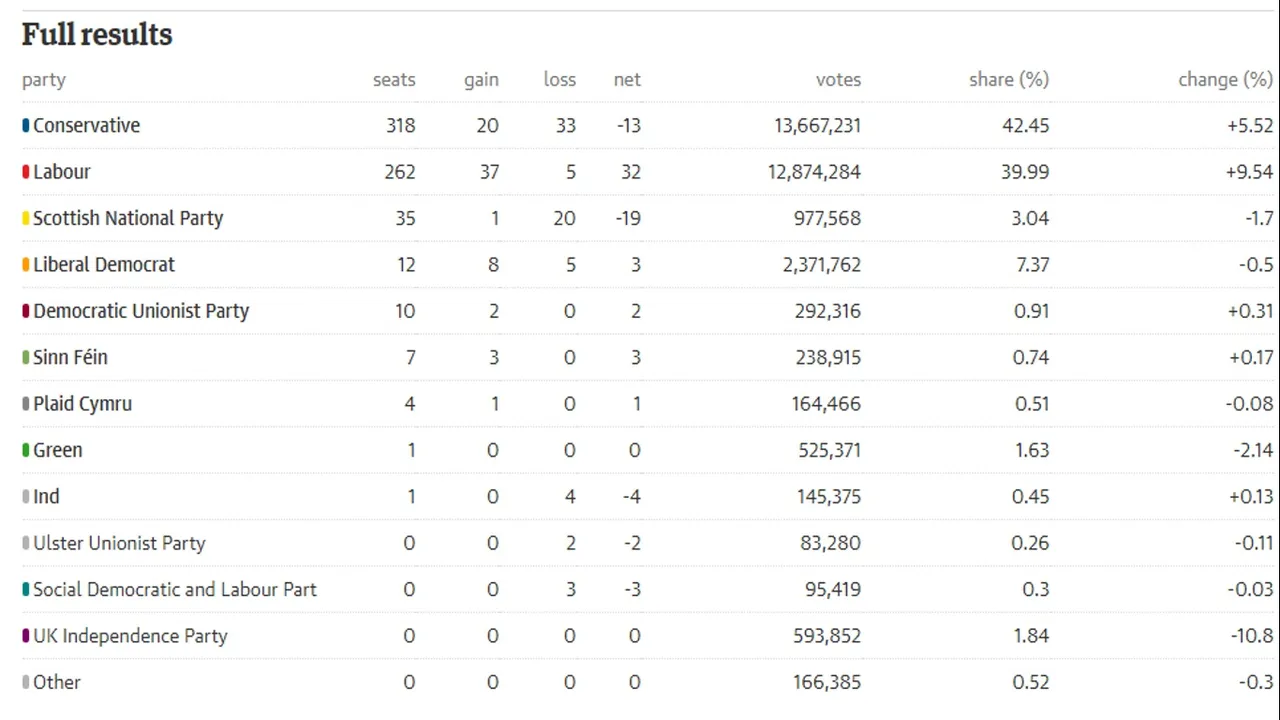
It is possible to manipulate results using preferential voting. Candidates can make deals with each other to convince voters to make the candidate that they made the deal with, the second preference. Candidates can also campaign to discredit a particular candidate. This is done so that voters that do not vote for them, will place the discredited candidate lower down. This will result in the discredited candidate getting less preference votes.

In Australia, people working for political parties hand out, how-to-vote cards. These cards advise people on the order they should preference the candidates.
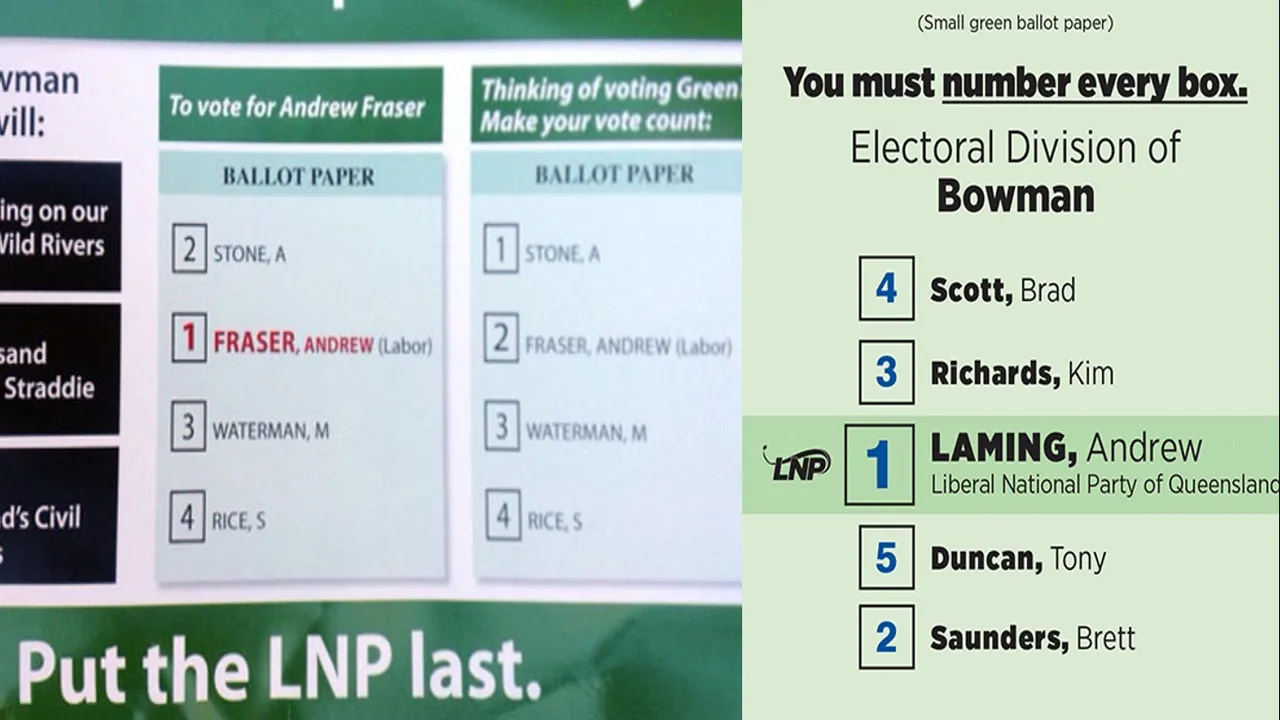
There have been many occasions where the allocation of preferences has dramatically changed the outcome of an election. Look at how the preferences boosted Michael Berkman’s total number of votes. Does every Ali King voter prefer Michael over Scott? Is it possible some political games are at play here? See the results of the Maiwar electorate below.
2017 Maiwar vote count as at 07/12/2017 (This was not the final count at the time of this post)
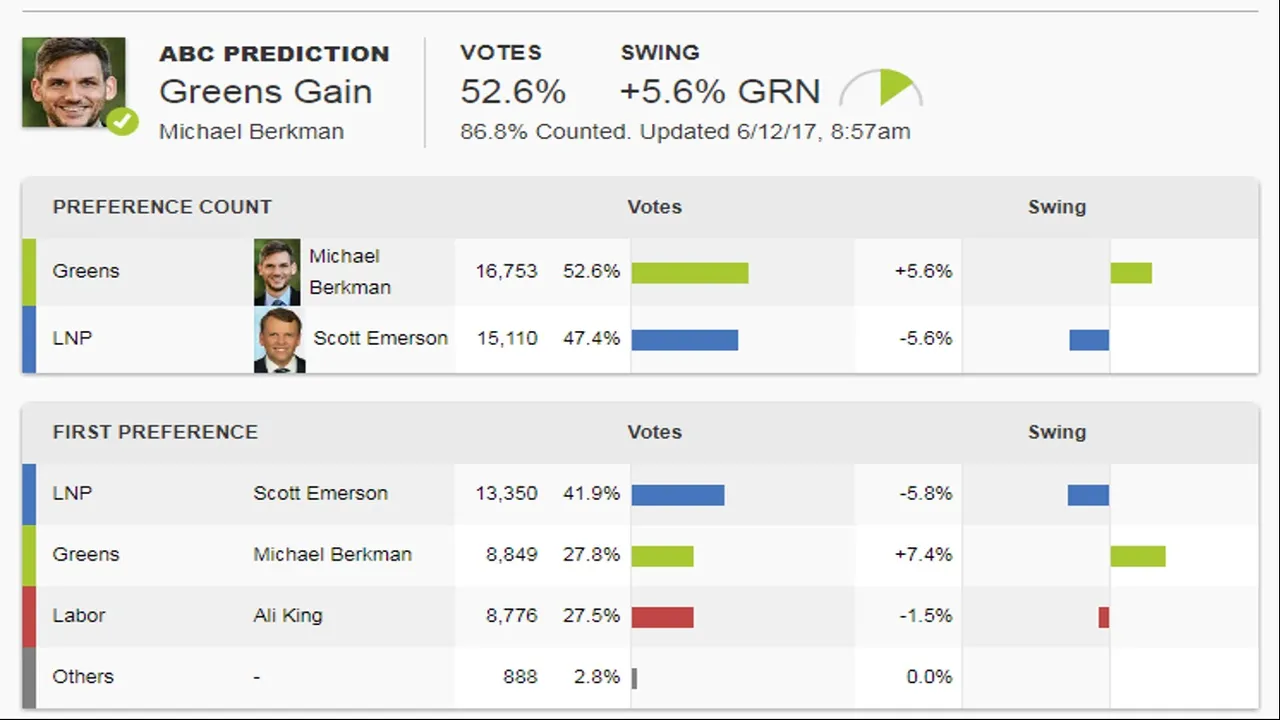
Which voting system is fairer? Is it first-past-the-post or one of the preferential voting systems?
First-past-the-post voting system has a number of weaknesses that become exposed as the number of candidate’s increases. When there are two dominant candidates (very common in a two-party system), the first-past-the-post voting system is very effective, simple and difficult to manipulate.
Preferential voting systems are more likely to produce a winner that represents the votes cast. Unfortunately, the votes cast and the preferences of the voters can be manipulated. This is apparent in Australia with the use of the instant-runoff voting system and the use of how-to-vote cards. The Australian system further complicates voting by having above-the-line voting. Voting above-the-line allows the party to allocate the voter’s preferences on their behalf based on the party of the candidate’s preferred ranking of candidates. This makes manipulation even easier. This also puts independent candidates at a disadvantage, as their supporters do not get an option to vote above-the-line.
The instant-runoff voting system applies equal value to the second or even the third preference votes redistributed from eliminated candidates as the first preference votes of the candidate. This equal weighting helped Michael Berkman win the seat of Maiwar. If a Borda count voting system had been used, Scott Emerson would have won the seat instead of Michael Berkman.
Conclusion
Determining the fairest voting system is not straight forward. Preferential voting systems appear superior in the absence of manipulation. Manipulation of elections and voting is very common. Borda count and Condorcet voting systems are structured to reduce the effectiveness of manipulation. These voting systems, in my opinion appear superior to the instant-runoff voting system.
In a two-party system, the voting system is close to inconsequential. Firstly, one party normally gets more than 50% of the vote. Secondly, the two major parties are almost identical and it does not matter which party takes office. I will post about the two-party system and how it is has been used to create one of the most effective forms of dictatorship in history. Voting does not matter if you live under a dictatorship.

Thank you for taking the time to read my post. I hope you enjoyed it.










